Filling the Gap: AMOLED and LCD from 2010 to 2012
by Joshua Ho on July 26, 2014 6:00 AM ESTHTC Rezound
The Rezound is one of the last devices that hit the market before devices regularly saw color accuracy testing and closer evaluation of grayscale performance. Subjectively, this display is still great even today. While the Rezound’s display is supposedly S-LCD (implying *VA), the viewing angles are much better than what was seen on the Desire HD. The one issue here is that the display isn’t laminated to the glass lens, so at extreme angles the display quality isn’t as good as what we see on S-LCD2 or S-LCD3 from phones like the HTC One X. At any rate, it’s very obvious that HTC has put a large emphasis on display with this device.
While luminance is dramatically improved over the Desire HD, I suspect that brightness was clamped to some extent again to alleviate battery life issues. Contrast isn’t great here either, at 733:1. As before, there’s no dynamic contrast active here to try and artificially boost contrast. Modern LCD displays have around 1000:1 typical contrast, so this is just a bit worse, all things considered.
HTC definitely didn’t do a perfect job in grayscale once again, as there’s still too much blue and green, but white point is at a reasonable level compared to the wildly unbalanced white points that we saw with the Galaxy S2. Things are also significantly improved here relative to the Desire HD.
In the saturation sweep, HTC did an incredible job calibrating the display. It’s quite clear to me that HTC made display a priority with this device. There’s a hint of saturation compression, but overall things are very close to perfect. This is definitely a leap ahead of AMOLED at the time.
Unfortunately, the Rezound falls a bit flat in the ColorChecker. Poor grayscale calibration definitely didn’t help with the average, although there is significant error elsewhere. Of course, this is from the lens of the present. At the time, it seems that HTC was making a concerted effort to do things right, even though no one was truly paying attention to display accuracy yet and reviewers seemed to be impressed by blue white points and intensely oversaturated colors.
Final Words
Looking through this new information, understanding the past is now much easier in terms of display. While I was only able to test Samsung and HTC devices, they serve as a relatively accurate barometer for trends in the rest of the industry. As the past is an excellent predictor for the future, a few trends are evident. First, AMOLED has had far more progress than LCD, although checkered due to the pressure for higher pixel density displays and relatively little pressure (at first) to improve color accuracy. Second, while LCD has been slower to advance it has also started at a far better place. One of the chief issues seems to have been controlling gamma/grayscale color balance, although this has been steadily improving throughout the industry. Color gamut and saturation sweep accuracy has generally been acceptable in LCD, although there seems to be a bit of a cyclical relationship as consumers favor wildly inaccurate colors for showroom appeal. LCD seems to have stagnated in contrast, with relatively little change in static contrast ratios over the past few years, and brightness seems to be limited to around 600 nits in practice, barring unconventional subpixel layouts.


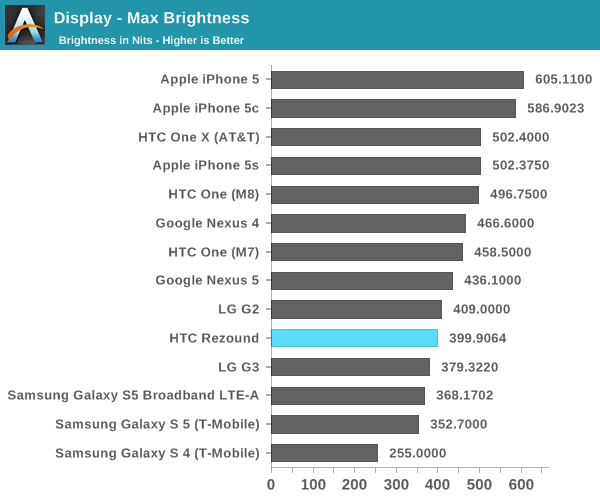
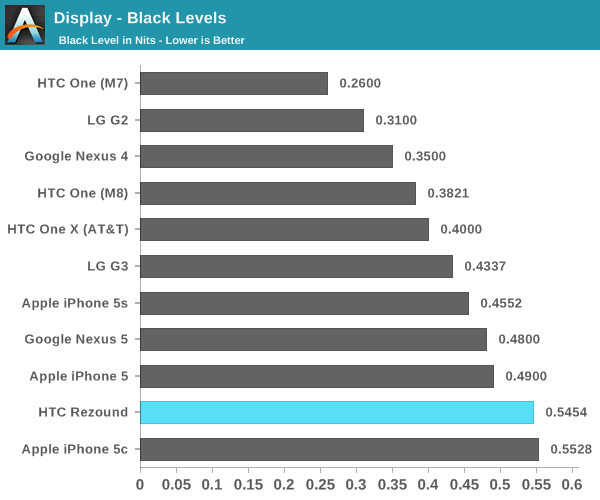
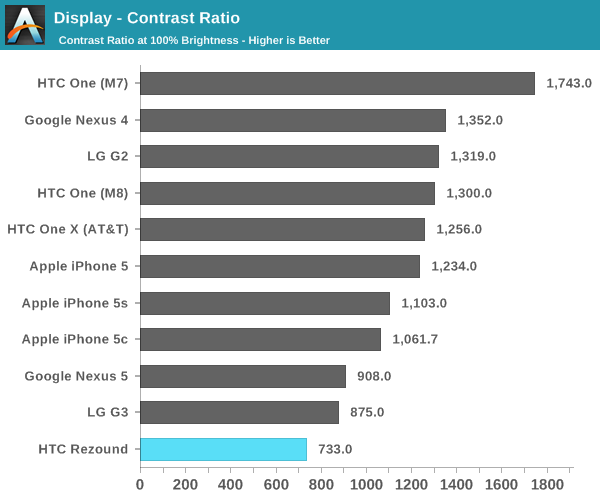
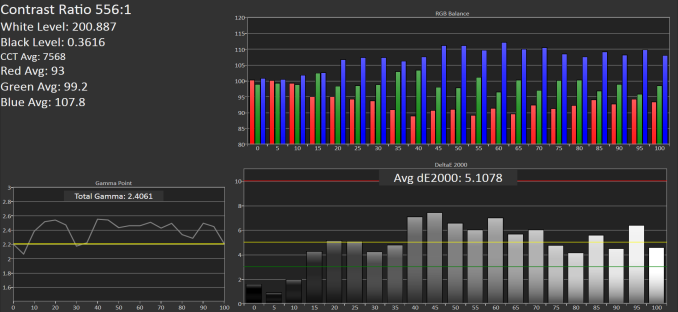
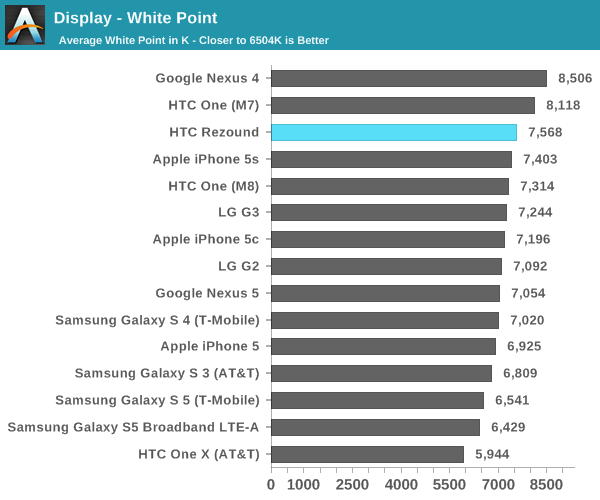

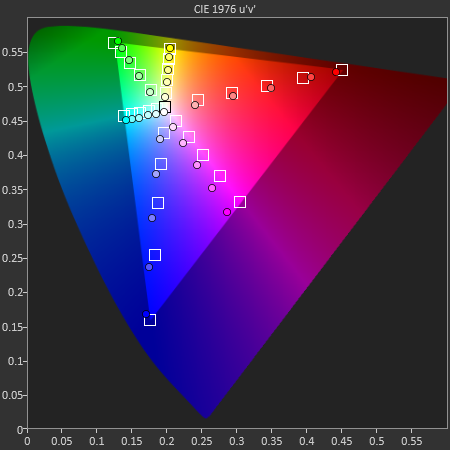
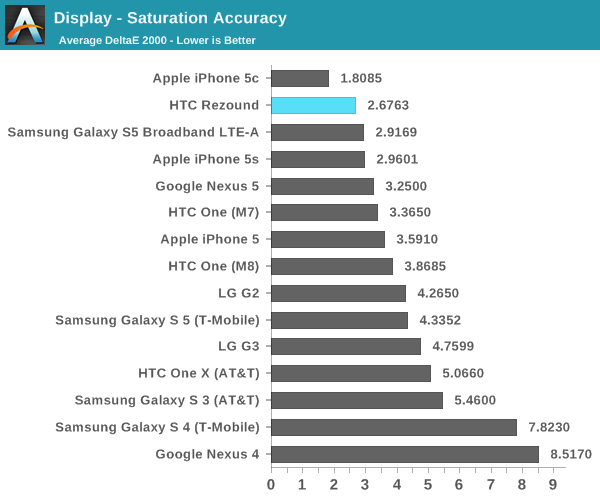

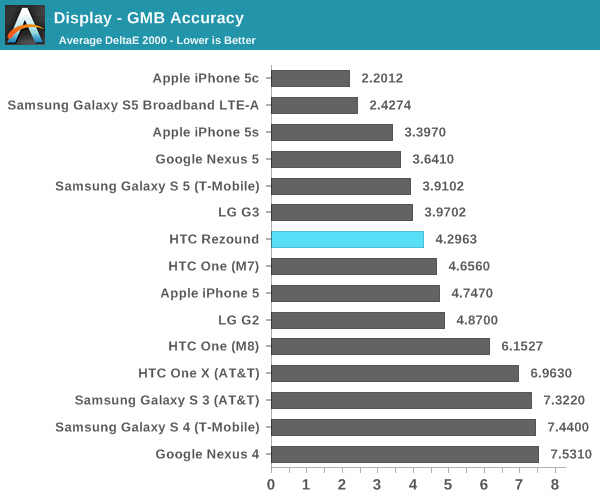








72 Comments
View All Comments
Impulses - Saturday, July 26, 2014 - link
Yeah, photography is the one big reason it matters in phones IMO, and not because I'd print straight from phone or wanna edit content on my phone... Trivial yet very practical endeavors like buying stuff online or even sharing stuff requires some degree of accuracy.I was renting a tux for a wedding where I was best man and the bride wanted my tie/handkerchief to match the bridesmaid's... I ended up bringing my camera for something that should've been wholly unnecessary (taking a handful of pictures of neck tie colors) because between my phone's camera and display I'd have little control over what she'd end up seeing...
Even then I had no control over her own display but I know they have a recent iPad so... Figured that'd be close enough.
Alexey291 - Saturday, July 26, 2014 - link
Yeah except you see there's a simple issue of - you take the photos with a camera on a phone. You expect them to be piss poor. (Sorry for the lingua but its true - there's not a single smartphone out there that actually takes good quality photos compared to a dedicated camera). Some phones are better than others but the tiny lens simply ruins colours and light.If you actually cared about how people would perceive your photos you would take them through a photo editor on a computer with a decent screen (and use a dedicated camera for god's sake). Most never bother. But even if one does the point is still moot because most people have their screens/monitors/phones all configured differently. Despite this one single website's (yours) crusade for standardisation :)
But I don't exactly expect you to stop posting these reviews. Though I do find this blast from the past a little odd considering how many reviews you have pending currently :P
Streamlined - Saturday, July 26, 2014 - link
This isn't 2002 anymore. The best camera is the one you got and for most people that is their phone. And if people really wanted quality pictures only from a dedicated camera than someone forgot to tell Nokia, Apple and Samsung.jwcalla - Saturday, July 26, 2014 - link
The point still stands though. The color accuracy of the display is hardly relevant when dealing with photos taken from a smartphone camera. In that case the weakest link in the color accuracy chain is, by far, the camera.AnnonymousCoward - Monday, July 28, 2014 - link
"Weakest link" arguments often don't make sense. Inaccuracies are additive. A good display is always beneficial. Furthermore, don't you think websites you visit on your phone have pictures taken with DSLRs?Alexey291 - Sunday, July 27, 2014 - link
you'll find that good pictures you see on your FB/G+ stream ARE in fact taken from a dedicated camera, usually with a stand and separate flash (if need be) as well.And then there's the stuff people with smartphones take. Which might as well be viewed on tiny smartphone screens - at least there it MAY look passable.
mkozakewich - Sunday, July 27, 2014 - link
"If you actually cared about how people would perceive your photos you would take them through a photo editor on a computer with a decent screen..."That's the whole point! If your phone is a computer with a decent screen, you can edit your photos.
Your argument is generally that today's phones don't make good production environments. The fix for that is to identify why, and improve them. Better apps, better screens, better processors, better interfacing (keyboards/mice), and then there's no reason you can't just edit photos on it.
If I were editing photos, I'd prefer to look at them on an iPhone 5 (or better, an iPad Air) than on my current computer screen.
Alexey291 - Sunday, July 27, 2014 - link
Well they don't make good production (for photography at least) environments because the camera is bad.Very little can be done to fix that due to lens size in the smartphone. The screen is just a small factor in the equation.
bill5 - Tuesday, July 29, 2014 - link
yeah i dunno, the color accuracy thing just seems like another big phone media way to bash samsung/praise appleakdj - Saturday, August 9, 2014 - link
So apparently you've. It read the past year's worth of Samsung and Apple reviews? The measurements of AMOLED in 13/14 vs 11/12? I'm not sure you're actually comprehending the actual article. At all